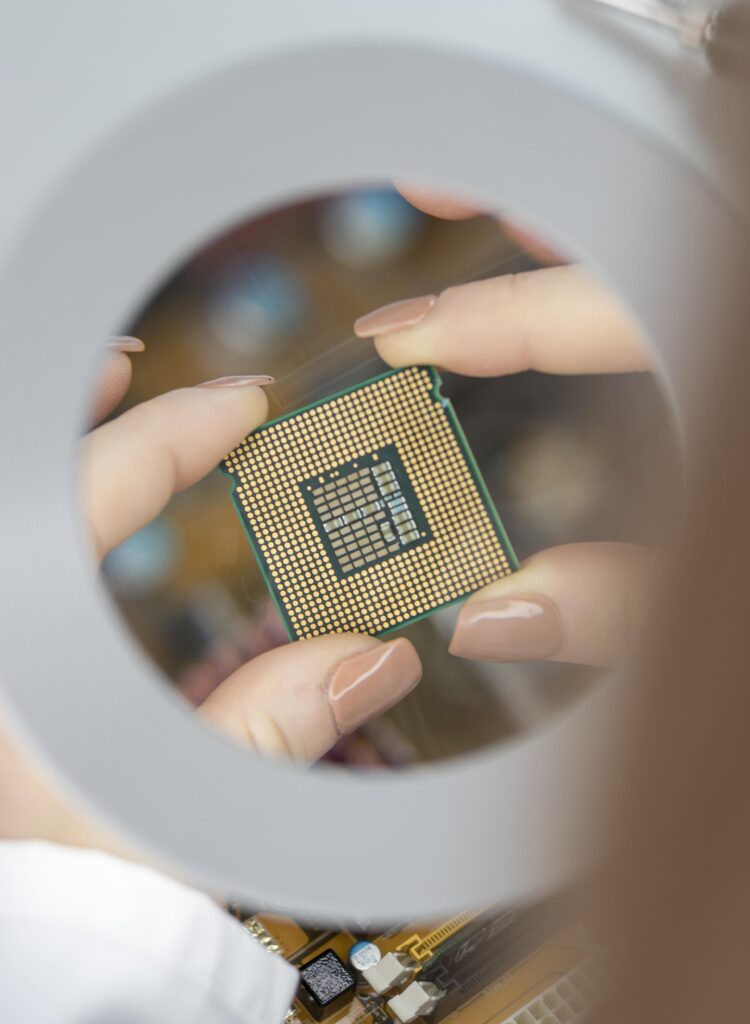The cascading impacts on the worldwide semiconductor industry.
Global Semiconductor Industry Faces Cascading Impacts The seismic tremors of the recent 7.4-magnitude earthquake in Japan’s central and northern regions, particularly felt in Ishikawa, Niigata, and Fuji prefectures, have reverberated across the worldwide semiconductor industry, creating challenges both at home and on a global scale. This unexpected event has not only put Japan’s resilient semiconductor […]

Global Semiconductor Industry Faces Cascading Impacts

The seismic tremors of the recent 7.4-magnitude earthquake in Japan’s central and northern regions, particularly felt in Ishikawa, Niigata, and Fuji prefectures, have reverberated across the worldwide semiconductor industry, creating challenges both at home and on a global scale.
This unexpected event has not only put Japan’s resilient semiconductor sector to the test but has also triggered a series of complications that extend throughout the entire international semiconductor supply chain.
Local Disturbance and Rapid Reactions
The nation’s esteemed semiconductor industry, recognized for its precision and technological expertise, encountered immediate challenges. Despite key production sites being located away from the quake’s epicenter, the urgency for prompt assessments and mitigation efforts became paramount. This situation highlights the pivotal role of agile risk management and disaster recovery practices within the high-tech sector.
Japan’s semiconductor sector, known for its resilience, swiftly mobilized to address potential disruptions. The incident emphasizes the industry’s vulnerability to unforeseen events and underscores the importance of proactive risk mitigation measures. As the seismic event prompted a recalibration of priorities, it serves as a stark reminder of the indispensable role played by agile strategies in ensuring the continuity and stability of high-tech operations. This episode accentuates the need for continuous refinement of disaster response mechanisms to fortify the semiconductor industry against unexpected challenges.
Global Supply Chain Reflections:
Japan has spotlighted the vulnerabilities inherent in the global semiconductor supply chain. As a key player in electronic components, Japan, especially in silicon wafer and chip manufacturing, faced disruptions that have the potential to reverberate across the worldwide industry. This occurrence necessitates a thorough reassessment of supply chain dependencies, underscoring the critical need for robust strategies to effectively address unforeseen events and enhance the industry’s resilience against potential disruptions.
The incident prompts a call to action for stakeholders to collaboratively implement comprehensive measures that safeguard the semiconductor sector from future uncertainties. By emphasizing the importance of proactive planning, the industry can strategically fortify itself against potential shocks, ensuring smoother operations and minimizing the impact of unforeseen disruptions. This episode serves as a catalyst for the global semiconductor industry to adopt adaptive strategies, reinforcing its capacity to navigate challenges and maintain stability in the face of unexpected events.
Adaptability and Long-Term Planning:
The critical need for supply chain diversification and technological innovation within the semiconductor industry. This seismic event serves as a poignant reminder for companies to reassess their strategies and prioritize resilience in the face of unforeseen challenges. The incident has prompted an urgent call for businesses to bolster their business continuity plans, emphasizing operational resilience to ensure the smooth functioning of operations even during disruptions.
Moreover, the earthquake underscores the potential for growth in the technology sector through the adoption of adaptive strategies. Companies that can navigate and effectively mitigate the impact of unexpected events are better positioned for sustained success. This emphasizes the importance of staying ahead in the ever-evolving tech landscape by fostering innovation and flexibility.
The earthquake in Japan acts as a wake-up call for the semiconductor industry, urging stakeholders to proactively embrace diversification, innovation, and resilience. By learning from this event, companies can fortify themselves against future uncertainties, ensuring a more robust and adaptable semiconductor sector.
Active Involvement and Future Consideration:

In light of these developments, it is imperative to engage in a comprehensive discussion about the broader impact of natural disasters on the semiconductor industry. How can companies proactively prepare for unforeseen events of this nature? What valuable lessons can the global tech community glean from Japan’s response to ensure a more resilient and adaptable semiconductor sector moving forward?
The discussion should involve stakeholders from various sectors, fostering collaboration and shared insights on enhancing the industry’s preparedness for future challenges. It is essential to explore innovative approaches and best practices that can serve as a foundation for a more resilient semiconductor ecosystem.
As the semiconductor industry grapples with the aftermath of Japan’s recent earthquake, it becomes increasingly evident that proactive measures, resilient strategies, and international collaboration are essential for mitigating the impact of unexpected events. The incident serves as a catalyst for reflection and action, prompting stakeholders to reevaluate their approaches and fortify the industry against future uncertainties.
By learning from the challenges posed by this earthquake, the semiconductor sector can emerge stronger and more prepared to navigate the complexities of a rapidly evolving global landscape. This incident highlights the need for ongoing collaboration, technological innovation, and strategic planning to ensure the long-term resilience of the semiconductor industry in the face of unforeseen disruptions.


